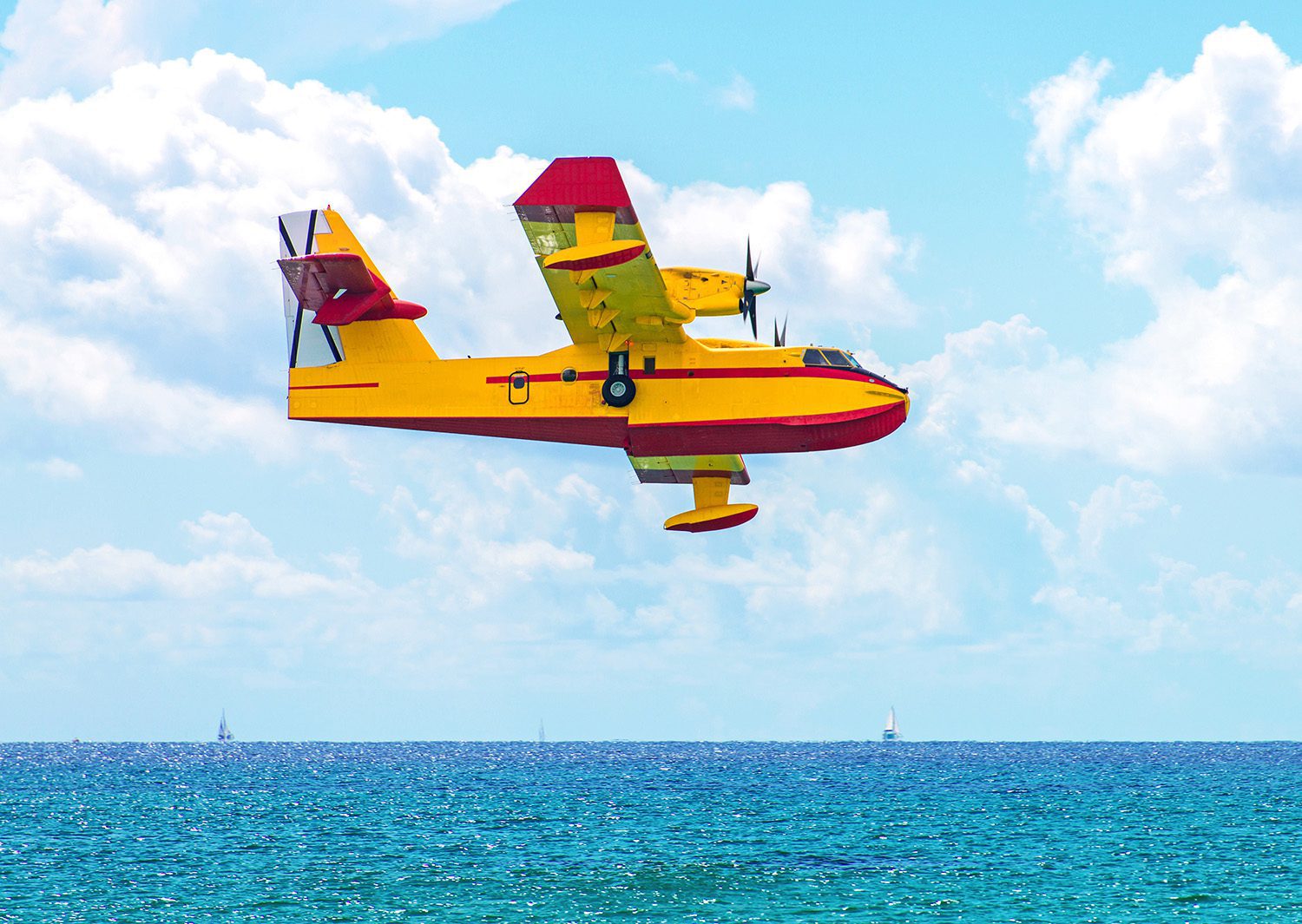Home • Exhibits • Online Exhibits • Bushplanes • Bombardier CL-415
Based on the success of the CL-215, Canadair introduced in 1993 the CL-415.
The 415 has an updated cockpit, aerodynamics enhancements, changes to the water-release system, powered flight controls, cockpit air conditioning, as well as upgraded electrical and avionics systems, creating a modern firefighting amphibious flying boat for use in detecting and suppressing forest fires.
Compared to the CL-215, the 415 has increased operating weight and speed, yielding improved productivity and performance. The 415 can scoop up to 6,140 litres (1350 Imperial gal or 1,620 US gal) of water from a nearby water source, mix it with a chemical foam if desired, and drop it on a fire without having to return to base to refill its tanks. The 415 was specifically developed to provide the capability to deliver massive quantities of suppressant in quick response to fires. The aircraft is built for reliability and longevity, with use of corrosion-resistant materials. The new 415GR has higher operating weights while the Bombardier 415 multi-role is available for use in a paramilitary search and rescue role and utility transport.

The “415” first flew on December 6, 1993, with the first deliveries in November 1994. Orders from many countries soon followed. Derived from its predecessor’s nickname, it acquired the name, “Super Scooper” in light of its greatly enhanced performance as a water bomber and fire suppressant weapon. In recognition of its abilities in the dangerous but necessary tasks of fire fighting, the aircraft was awarded the prestigious Batefuegos de oro (gold fire extinguisher). The award citation in part read “This is the most efficient tool for the aerial combat of forest fires, key to the organization of firefighting in a large number of countries. The continuous improvements to meet the needs of forest firefighting have made these aircraft the aerial means most in demand over more than 30 years.”
Of the 76 built, seven have been removed from service due to accidents.
The aircraft requires 1,340 metres (4,400 ft) of flyable area to descend from 15 metres (49 ft) altitude, scoop 6,137 litres of water during a 12-second 410 metres (1,350 ft) long run on the water, then climb back to 15 m altitude. According to the Bombardier website, the 415 takes “12 seconds, travelling at 130 km/h (70 knots) and 410 metres (1,350 ft), to scoop up a 6,137-litre (1,621-US-gallon) water load… The advanced Bombardier 415 aircraft scoops water from sites that are only two metres (6.5 ft) deep and 90 metres (300 ft) wide. When the water site is too small for a full pick-up, the Bombardier 415 takes a partial load and returns to the fire. The Bombardier 415 amphibian doesn’t need a straight scooping path. Since the aircraft is still in ‘flying’ mode while scooping, pilots can easily manoeuvre around river bends or visible obstacles in the water.”
50 Pim Street Sault Ste. Marie, ON Canada P6A 3G4